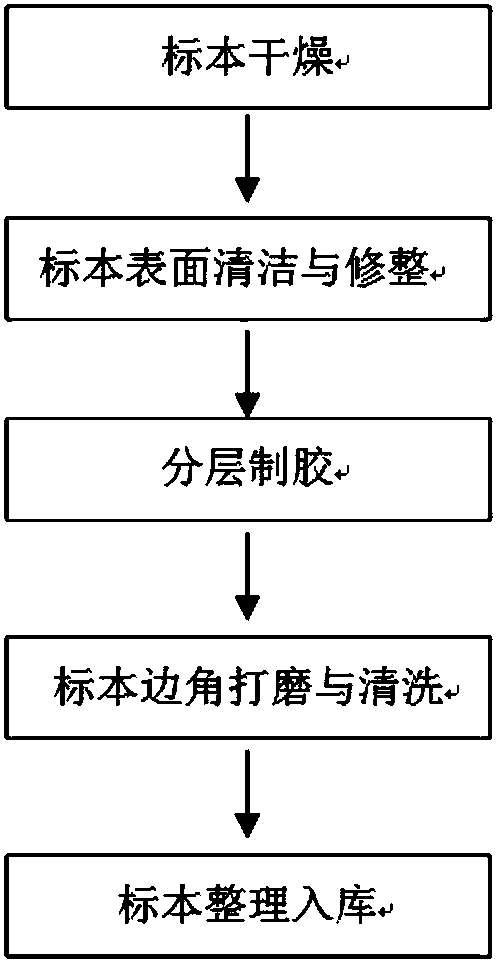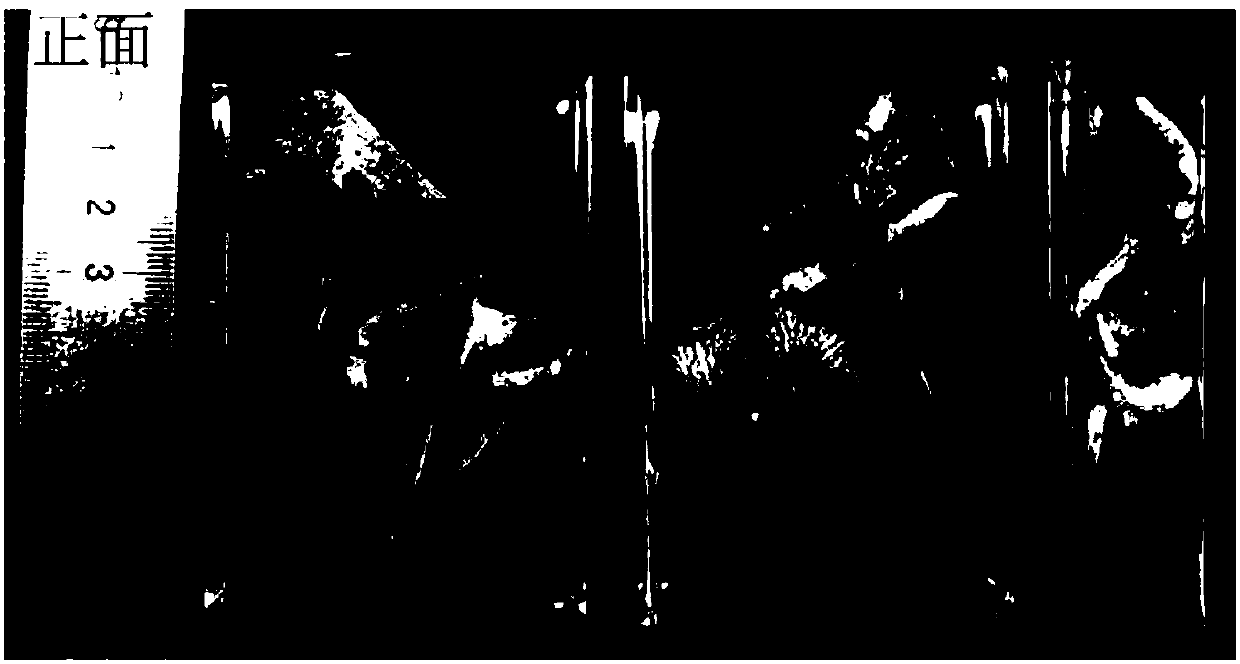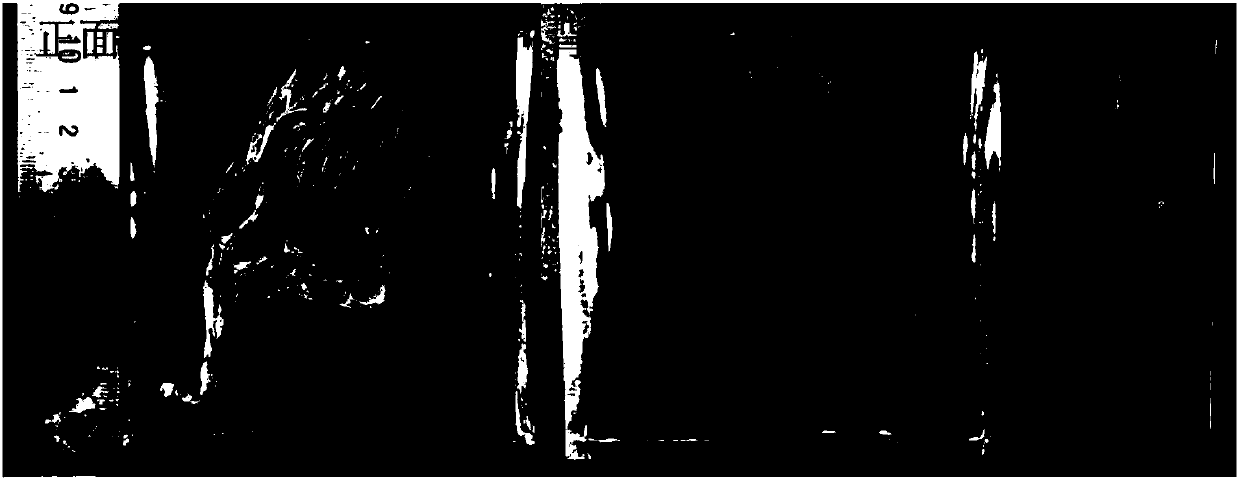Method for preparing macrofungal specimens
A large-scale, fungal technology, which is applied in the field of fungal specimen production, can solve the problems of small-sized fungi lacking outer layer protection, damage due to extrusion, and complicated processes, so as to inhibit mold and insect breeding, good folding resistance, and process simple effect
- Summary
- Abstract
- Description
- Claims
- Application Information
AI Technical Summary
Problems solved by technology
Method used
Image
Examples
Embodiment 1
[0036] Embodiment 1, the making of Singerocybe sp. epoxy crystal drop glue specimen
[0037] In this case, the Singer Cup Umbrella specimen is used as the material. as per figure 1 The process shown in the production is carried out, and the specific steps are as follows:
[0038] (1) Preliminarily clean the collected Singer cup umbrellas and dry them in an oven at 45°C.
[0039] (2) Clean the surface of the dry fruiting bodies obtained in step (1) to remove impurities such as soil and sawdust on the surface of the specimen.
[0040] (3) Place A and B components in the AB glue in a 30°C incubator for 3 hours, mix and stir at room temperature according to the weight ratio of 2.8:1, pour a layer of 0.2cm thick glue into the mold, and place at room temperature 12 hours.
[0041] (4) Place the specimen obtained in step (2) on the first layer of crystal drip glue made in (3), and pour the second layer of 0.3cm thick glue after making the glue according to the ratio described in ...
Embodiment 2
[0046] Embodiment 2, the making of fleshy pink branch coral fungus (Ramaria ephemeroderma R.H.Petersen&M.Zang) epoxy crystal drop glue specimen
[0047] In this case, the specimens of Cladocoronas flesh pink are used as materials. as per figure 1 The process shown in the production is carried out, and the specific steps are as follows:
[0048] (1) Naturally dry the fruiting bodies of the collected Cladophorus sarcophagus.
[0049] (2) Clean the surface of the dry fruit body obtained in step (1), remove impurities such as soil on the surface of the specimen, and use a scalpel to repair the appearance of the defective part.
[0050] (3) Place the AB glue at 35°C for 4 hours, configure it according to the weight ratio of 3.2:1, pour a layer of 0.2cm thick glue into the mold, and leave it at room temperature for 12 hours.
[0051] (4) Place the specimen obtained in step (2) on the first layer of crystal drip glue made in (3), pour the second layer of 0.2cm thick glue after mak...
Embodiment 3
[0056] Embodiment 3, the making of Liumei Morchella (Morchella sextelata M.Kuo) epoxy crystal drop glue specimen
[0057] In this case, the specimen of Liumei Morchella was used as the material. as per figure 1 The process shown in the production is carried out, and the specific steps are as follows:
[0058] (1) Freeze-dry the collected fruiting body of Morchella liumei.
[0059] (2) Clean the surface of the dry fruit body obtained in step (1), remove dust and other sundries on the surface of the specimen, and use a scalpel to rest the appearance of the defective part.
[0060] (3) Place the AB glue at 45°C for 3.5 hours, configure it according to the weight ratio of 3.05:1, pour a layer of 0.4cm thick glue into the mold, and let it stand at room temperature for 12 hours.
[0061] (4) Place the specimen obtained in step (2) on the first layer of crystal drip glue made in (3), pour the second layer of 0.5cm thick glue after making the glue according to the ratio described i...
PUM
 Login to View More
Login to View More Abstract
Description
Claims
Application Information
 Login to View More
Login to View More - R&D
- Intellectual Property
- Life Sciences
- Materials
- Tech Scout
- Unparalleled Data Quality
- Higher Quality Content
- 60% Fewer Hallucinations
Browse by: Latest US Patents, China's latest patents, Technical Efficacy Thesaurus, Application Domain, Technology Topic, Popular Technical Reports.
© 2025 PatSnap. All rights reserved.Legal|Privacy policy|Modern Slavery Act Transparency Statement|Sitemap|About US| Contact US: help@patsnap.com



